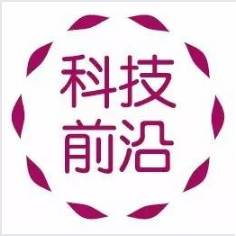
【重磅消息】韩春雨公布基因编辑的protocol了!
自从5月2日韩春雨在《Nature Biotechnology》上发表了备受瞩目的NgAgo基因编辑技术以来,随着时间的推移,因多方学者报告无法重复实验,事情几近逆转,韩春雨本人受到了巨大的质疑,甚至干扰。在质粒共享信息库Addgene的要求下,韩于8月8日提交了详细protocol。
韩春雨每天都会收到很多骚扰电话和短信,但是他对自己的基因编辑技术充满信心。
三个月前,来自河北科技大学韩春雨发表了关于通过NgAgo酶对哺乳动物进行基因编辑的论文。在轰动学术界后,越来越多的科学家表示,无法重复出该结果。于是质疑声四起。
在这样的日子里,韩春雨每天都会收到很多骚扰电话和短信,嘲笑他,甚至对他讲“你的事业完蛋了。”不过,韩春雨始终相信自己的工作没有问题。他对《Nature》表示,应线上质粒共享信息库Addgene的要求,他已经在8月8日提交了一份详细协议,希望借此可以帮助其他人重复他的工作。刊登原论文的期刊《Nature Biotechnology》也正在调查此事。
General Protocol for NgAgo-mediated genome editing
https://www.addgene.org/78253/
nls-NgAgo-GK完整序列图, Addgene
A general protocol of NgAgo/gDNA-mediated genome editing
1. Cell culture
293T cells are maintained in high-glucose DMEM (Gibco) supplemented with 10% FBS (Gibco) and penicillin/streptomycin at 37°C with 5% CO2 incubation. When cells reach their ≈60% confluence, perform transfection. Before transfection, cells are changed to medium containing 2% FBS(heat inactivated). Since 293T cells are not firmly attached, be gentle and do not disturb cells when changing medium.
2. Transfection
2-1 NLS-NgAgo expressing plasmid is extracted with Wizard® Plus SV Minipreps DNA Purification System (Promega), and is adjusted to 100 ng/μl in water (pH 8.0, alkalization by NaOH).
2-2 5’ phosphorylated ssDNA guides are dissolved to 100 ng/μl in water (PH 8.0) For each well of a 24-well plate, 200-250 ng NLS-NgAgo expression plasmid and 100-300 ng guides are diluted in 50 μl Opti-MEM (Gibco); 1.25 μl Lipofectamine® 2000 is diluted in 50 μl Opti-MEM. Incubate the DNA mix and lipofectamine mix for 5 min.
2-3 Combine the DNA mix and lipofectamine mix with gentle pipetting and incubate for 20 min. The DNA/lipo mixture is then added into each well of cells.
*Since NgAgo follows “one-guide faithful” rule, i.e. guides can only be loaded when NgAgo protein is in the process of expression, to improve the efficiency of gDNA loading to NgAgo, sometimes multiple transfection of gDNA helps (e.g. depending on the different kinetics of NgAgo expression in different cells, a second transfection of gDNA can be performed 8, 12 or 24 hours after the primary transfection)
*As stated below, cells will be harvested 48-60 hours after transfection. 90% confluence of the cells on harvesting is ideal. Cell overplating significantly weakens the efficacy of genome editing. Taking HDR as an example, it occurs only during S and G2 phases.
3. Genomic DNA extraction
3-1 48-60 hours after transfection, cells are harvested by trypsin digestion. Four wells of cells are combined into a 1.5 ml EP tube.
3-2 For genomic DNA extraction, 500 μl of cell lysate buffer (50 mM Tris,100 mM EDTA,0.5% SDS,pH 8) and 10 μl proteinase K (10 mg/ml)are added into each tube and mixed gently and sufficiently. Bathe the tubes at 55℃ for 2 hours.
3-3 200 μl Tris-Phenol and 200 ul trichloromethane are added into each tube and mixed gently and sufficiently. After incubation for 5 min, samples are spun at 12,000 rpm for 15 min to separate aqueous phase from Phenol phase.
3-4 Carefully collect the aqueous phase into a clean EP tube.
3-5 Repeat the Steps 3-3 and 3-4 once and pool the aqueous phase.
3-6 Add 500 μl trichloromethane into the collected aqueous phase, mix gently and sufficiently, stay for 5 min, and then spin the sample at 12,000 rpm for 15 min to separate aqueous phase from Phenol phase. Carefully remove the aqueous phase into a clean EP tube.
3-7 Repeat the Steps 3-6 once.
3-8 Add 900 μl EtOH to the collected aqueous phase and incubate at -20°C for 30 min.
3-9 Centrifuge the sample at 12,000 rpm for 10 min, and then the DNA sediment is washed with 500 μl 75% EtOH thrice.
3-10 Air-dry the DNA sediment, add 50 μl 0.5 x TE and then adjust the genome DNA to 100 ng/μl for later use.
Note:
1. NgAgo/gDNA system is extremely sensitive to contamination of intracellular bacteria (including mycoplasma) which are widespread and leave no visible signs of presence. Carefully excluding the presence of intracellular bacteria before performing experiments.
2. Because Agos need magnesium, avoid EDTA when detaching and seeding cells into the plates for transfection. Alternatively, supplementing Mg2+ to 5 mM (may need optimization to your cell type).
3. Avoid using Lipofectamine® 3000 since the supplement P3000 interferes with ssDNA transfection. Lipofectamine® 2000 is a good choice. Other transfection methods such as electroporation are yet to be tested.
4. Ideally, 5' phosporylation of ssDNA guide by using T4 PNK (Biolab):
T4 PNK 2 μl
T4 ligase buffer (containing ATP): 12 μl
1OD ssDNA (about 33 μg) in H2O: 100 μl
(alternatively) additional ATP (25 mM) 2 μl
Add H2O to a final volume of 120 μl
Incubate at 37℃ overnight
After 5' phosphorylation, the resultant ssDNA needs no purification, dilute by water (PH8) to 300 μl with a final concentration of 10 nM or 100 ng/μl)
欢迎您加入我们的微信群:请加管理员微信yxbsllz,请务必标注您的专业、学历、职称!













